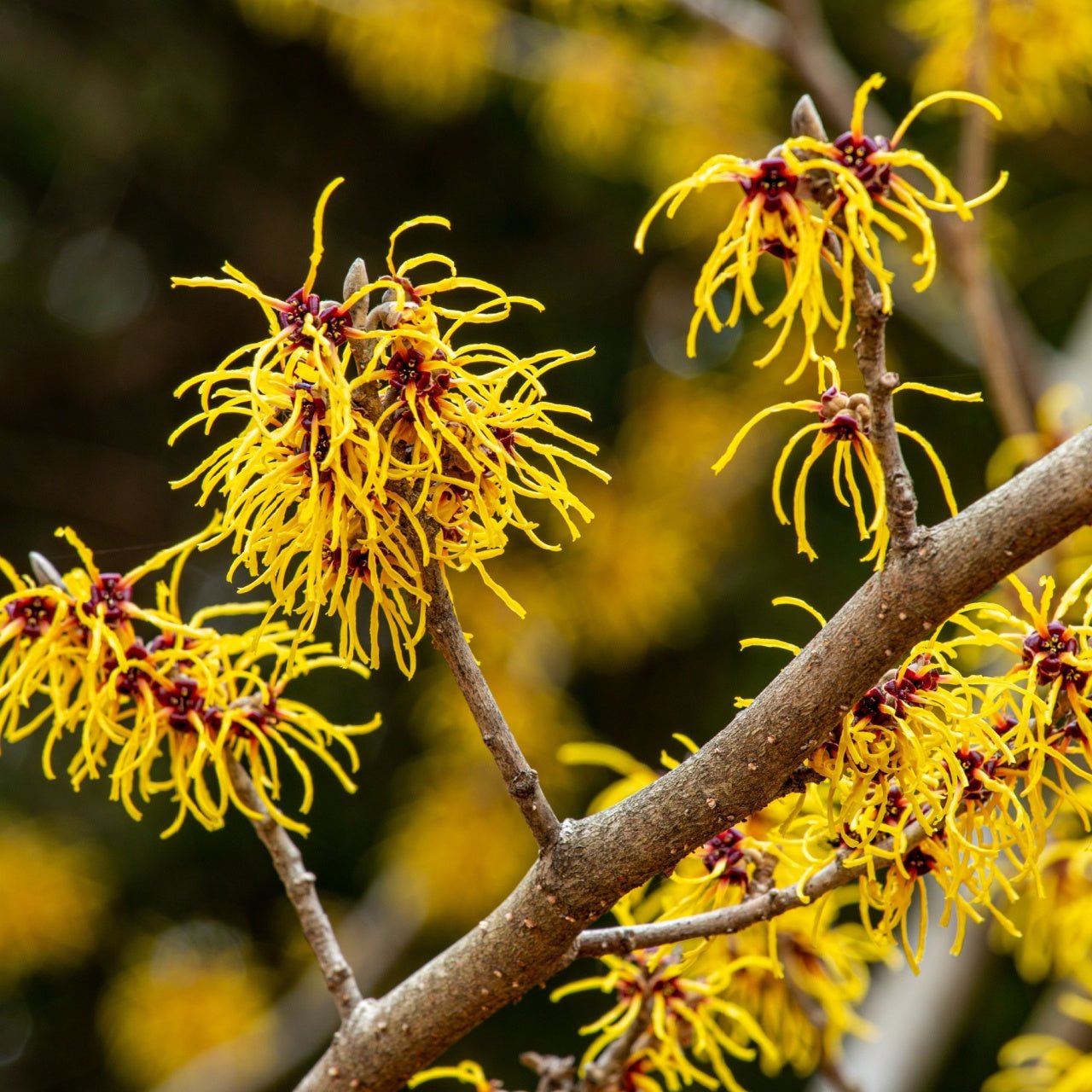Step by Step
Creating a well-manicured hedge is an excellent way to add structure, privacy, and aesthetic appeal to your garden or landscape. While many types of plants are suitable for hedging, shrubs offer a versatile and natural choice. This comprehensive guide will explore training a shrub into a hedge, including specific shrub options like Carolina Allspice, Forsythia, Weigela, Witch Hazel, and Northern Spice Bush.
Step 1: Choosing the Right Shrub
Selecting the suitable plant species is the first crucial step in training a shrub into a hedge. Not all shrubs are ideal for hedging, so consider height, growth rate, foliage density, and climate compatibility factors. Here are five shrubs known for their hedge-worthy characteristics:
- Carolina Allspice (Calycanthus floridus): This deciduous shrub is prized for its fragrant, dark red-brown flowers and lush green foliage. It can reach a 6-9 feet height and is well-suited to hedges in U.S.D.A. zones 5-9.
- Forsythia (Forsythia spp.): Forsythia, with its bright yellow spring blooms, is a popular choice for early-flowering hedges. It grows rapidly, reaching 6-10 feet high, and is ideal for U.S.D.A. zones 4-9.
- Weigela (Weigela spp.): Known for its trumpet-shaped flowers in various colors, Weigela makes an attractive hedge. It can grow to 6-10 feet and thrives in U.S.D.A. zones 4-8.
- Witch Hazel (Hamamelis spp.): Witch Hazel is admired for its unique late-winter to early-spring blooms and vibrant fall foliage. It typically grows to 6-12 feet and is suitable for U.S.D.A. zones 3-9.
- Northern Spice Bush (Lindera benzoin): This native shrub features aromatic foliage and vibrant yellow flowers in early spring. The northern spicebush can grow up to 9 feet tall and is well-suited for U.S.D.A. zones 4-9.
Step 2: Site Selection and Preparation
Once you've chosen the appropriate shrub for your hedge, it's time to plan the location. Ensure the selected site receives adequate sunlight, as most of these shrubs prefer full sun to part shade. Well-drained soil is essential for healthy growth.
- Clear the area of weeds, debris, and unwanted vegetation.
- Dig a trench along the planting area, approximately 2 feet wide and 1 foot down.
- Amend the soil using organic matter, such as compost, to improve fertility and drainage.
Step 3: Planting
Proper planting is critical to establishing a healthy shrub hedge. Follow these steps to ensure success:
- Remove the shrubs from their containers or prepare bare-root shrubs according to the packaging instructions.
- Space the shrubs according to the height at maturity, typically 2-4 feet apart.
- Place the shrubs in the trench, ensuring the top of the root ball is level with the soil surface.
- Backfill the trench with soil and water thoroughly to settle the soil around the roots.
Step 4: Pruning and Training
Regular pruning and training are essential to encourage your shrubs to form a dense, attractive hedge. The specific timing and techniques may vary depending on the shrub type, but here are some general guidelines:
- Carolina Allspice: Prune immediately after flowering to shape the shrub and remove dead or damaged branches. Encourage a dense form by cutting back long stems.
- Forsythia: Prune right after flowering to control its height and promote bushier growth. Prune off one-third of the oldest stems each year to rejuvenate the plant.
- Weigela: Prune in late winter or early spring before new growth begins. Trim back one-third of the oldest stems to maintain shape and encourage new shoots.
- Witch Hazel: Prune in late winter or early spring, removing dead or crowded branches. Minimal pruning is required to maintain its natural form.
- Northern Spice Bush: Prune in early spring or late winter to shape the shrub while removing dead wood. Encourage dense growth by cutting back long branches.
Step 5: Maintenance
Maintaining a healthy shrub hedge involves regular care:
- Watering: Water your newly planted shrubs deeply and consistently until they become established. Once established, most drought-tolerant shrubs benefit from occasional watering during dry spells.
- Mulching: Apply 2-3 inch layers of mulch around the base of the shrubs to retain moisture, suppress weeds, and regulate soil temperature.
- Fertilizing: Apply a balanced, slow-release fertilizer in the spring to promote healthy growth. Follow the manufacturer's recommendations for dosage.
- Pest and Disease Control: Monitor your shrubs for signs of pests or diseases. Take prompt action if any issues arise. Regularly inspect the foliage for abnormalities.
Training shrubs into hedges can be a rewarding and enjoyable gardening endeavor. The choice of shrub species is critical, and each option, including Carolina Allspice, Forsythia, Weigela, Witch Hazel, and Northern Spice Bush, brings unique characteristics to your landscape. By following these steps, you can create a lush and beautiful hedge that provides privacy and structure and enhances the overall aesthetics of your outdoor space. With proper care and maintenance, your shrub hedge will flourish and become a lasting asset to your garden for years.
How to Shape Hedges Healthily and Keep Them Tidy
Maintaining tidy hedges through correct shaping techniques is a crucial element of garden maintenance because it enhances the landscape's appearance and the plants' well-being. Your choice of established techniques will keep your hedges looking perfect, whether you want a precise formal hedge or a softly sculpted natural appearance. This guide shows you how to trim and schedule maintenance to handle common issues, which will help keep your hedges looking vibrant and well-maintained year-round.
1. Select the appropriate hedge plant for your specific area
Planting the correct shrub type in its ideal location is the initial step to maintaining healthy hedges. Plant species exhibit various growth speeds alongside different sunlight needs and levels of resilience to pruning. Boxwood, yew, privet, and laurel are popular hedging plant choices. The compact growth and small leaves of boxwood and yew make them ideal choices for formal hedges, while laurel and privet provide faster privacy through quicker growth. Selecting the right hedge plant that matches your climate, soil conditions, and available space establishes solid foundations for its long-term health.
2. Proper Planting and Initial Shaping
Correct planting techniques and initial shaping are essential for maintaining a neat hedge. When planting new hedges, space the plants correctly: Planted too close together results in weak and spindly hedges growing as time passes. Begin shaping your newly planted hedge through light trimming right away. Eliminate any branches with damage or disease and perform gentle tip-pruning to stimulate the development of lateral branches. The early shaping process establishes the structure for denser and thicker hedge growth during maturity.
3. Timing Your Pruning
Hedge maintenance relies significantly on when you perform pruning. Hedge maintenance requires at least one to two major trimming sessions each year. Your local climate and the type of hedge you have determined when you should perform pruning tasks.
Early Spring Pruning: The best period for an extensive pruning job is when frost occurrences diminish before intense growth begins. This pruning method promotes full hedge development during the growing season. Spring pruning lets you eliminate winter damage while giving your hedge a new shape after the cold season.
Mid- to Late-Summer Pruning: Performing a second pruning helps manage growth during the season and preserves the hedge's structured shape. Light trims may help control erratic growth in some vigorous species throughout the summer when necessary.
Autumn pruning requires care since new growth appearing before winter faces an increased risk of frost damage. When fall cleanup is needed, schedule it early enough to allow new growth time to harden.
4. The Correct Shaping Technique
The primary objective for trimming formal hedges is to achieve a trapezoidal or tapered shape with a top section narrower than the base. This design allows sunlight to reach the lowest leaves, preventing bald spots. When the upper part of a plant grows more expansive than the base, the lower branches will become shaded out and die back, creating unsightly gaps.
When trimming:
Use sharp, clean shears or hedge trimmers.
Begin trimming the sides at the bottom, then work your way up, ensuring each cut slants slightly towards the center.
Regularly pause to assess your progress from different perspectives.
The trimming of the top layer should be performed with attentive movements to achieve a uniform and flat surface.
Cut back branches at different lengths during pruning to achieve a natural appearance rather than a flat surface. This pruning method leads to uneven growth patterns, creating a soft and natural appearance ideal for cottage gardens and wildlife border hedges.
5. Light and Nutrients
A hedge requires sufficient sunlight together with essential nutrients to maintain its health. Hedges planted too close to fences or walls risk developing uneven growth and stunted development. Extra attention must be given to shaping the hedge so that all branches receive maximum light when positioning restrictions prevent ideal placement. Spring application of balanced fertilizer to hedges stimulates dense and vigorous growth. Plant owners apply slow-release granular fertilizer to the base of each plant when the growing season begins.
6. Addressing Common Problems
The best-maintained hedges may still encounter problems like pests, diseases, or damage from the weather. Early problem detection is possible through routine leaves, branches, and soil examinations. Here are a few common issues:
Fungal Disease: Leaf spots, mold, and dieback are typical fungal disease symptoms. Quickly remove infected branches and sterilize your cutting tools. Provide good airflow around the hedge and reduce watering if positioned in a wet environment.
Insect Infestations: Infestations of aphids, caterpillars, and scale insects can damage leaves and stems. When infestations reach severe levels, bring in natural predators or apply insecticidal soap.
Winter Damage: Frost formation, ice accumulation, and snow buildup lead to hedge branch breakage and foliage browning. Brush heavy snow loads off branches with care to avoid breakage. Burlap wrapping protects plants during freezing weather conditions.
7. Ongoing Maintenance for Tidy Hedges
The health and appearance of hedges depend on regular and thorough maintenance practices. During the growing season, light maintenance removes errant shoots when they first appear. Preserve hedge health by maintaining mulched soil and controlling weeds to achieve moisture retention and temperature regulation. Applying proper timing methods and specialized techniques while monitoring plant well-being can sustain beautiful hedges that improve outdoor areas' appearance and market worth.
Read more

Delights The persimmon tree, scientifically known as Diospyros kaki, is magnificent and fruitful. This has captured the hearts and palates of people worldwide for centuries.

The Autumnal Majesty of the Sassafras Tree: Nature's Artist As the dog days of summer gradually give way to the cool, crisp embrace of autumn, the natural world undergoes a breathtaking transformat...



